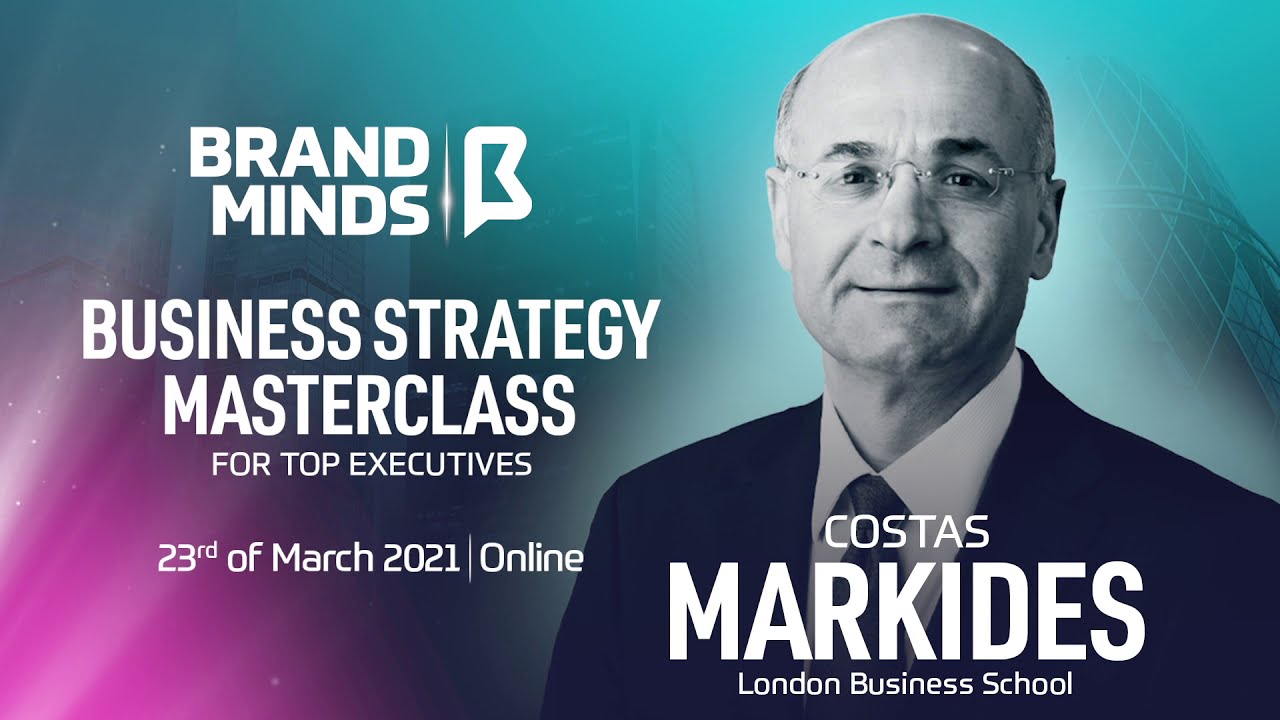9 key takeaways from Business Strategy for Top Executives Masterclass
Business Strategy for Top Executives Masterclass with Costas Markides took place yesterday, March 23, 2021.
Read on to discover 9 key takeaways.
Yia sou*, world-changer!
I felt it was appropriate for me to welcome you in Greek, the world’s oldest recorded living language and the native language of Costas Markides, Professor of Strategy & Entrepreneurship at London Business School.
Prof Costas Markides delivered yesterday the Business Strategy for Top Executives Masterclass, a BRAND MINDS live online event.
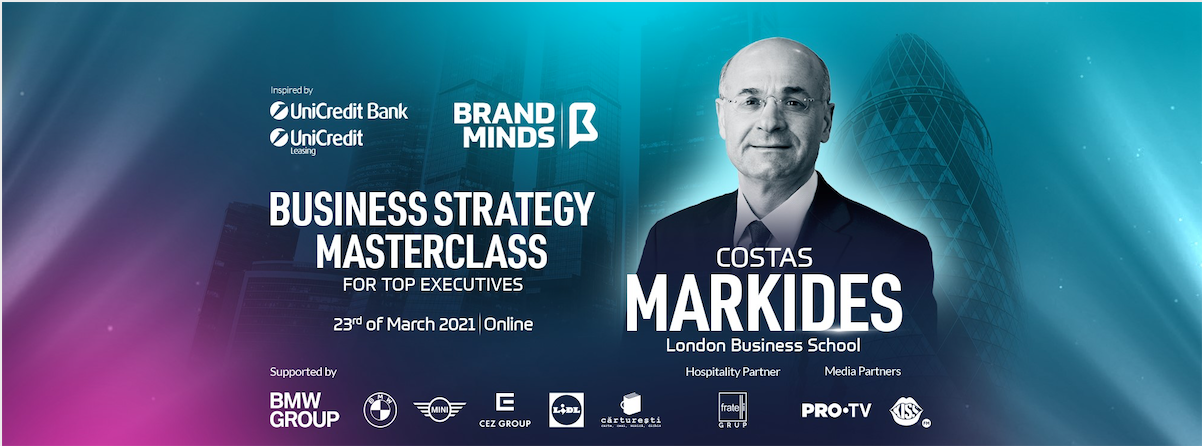
Over the span of nine hours (breaks and Q&A sessions included) Prof Markides delivered a host of amazing insights, latest information and great storytelling.
He spoke with passion about strategy in a volatile world, how to become agile, how to mobilize your organization for strategy execution and how to overcome the latest challenges that new leadership is facing today.
Prof Markides’ high energy and to-the-point teaching style made it easy for everyone attending the masterclass to understand and assimilate the business strategy concepts he was talking about throughout the event.
What was the participants’ feedback?
The masterclass registered a high level of participant engagement. The chat was on fire with attendees asking questions, answering polls and writing comments on the topic at hand.
- 90.3% of participants evaluated Costas Markides’ performance to be amazing;
- 92.9% of participants said the overall experience has exceeded their expectations.
One participant said she felt “full of energy after masterclass:)” and decided she had new things to change in her work with a commitment to “make my team feel special”.
Another participant said attending the masterclass “confirmed some answers”.
Remember when you were a student, taking lots of notes in class? I guess one participant remembered because she told us: “I have filled in 2 A4 pages with notes and many takeaways”.
Another attendee shared with us a smarter way of taking notes: “I have selected 36 keywords that I think will help me structure the strategy of the division I lead”.
We are thrilled when participants tell us “All was above my expectations! Congratulations!”
But one particular type of feedback brings us the feeling of accomplishment: when attendees tell us they had “a great learning experience” and they “will brainstorm afterwards to implement what they have learned”.
Everyone stayed until the end wishing Costas could share one more insight, one more business concept, one more how-to.
As they say, you had to be there. But if you weren’t, you can watch four short cuts from the event with Prof Costas, that I have inserted below.
Without further ado, let’s delve into 9 key takeaways from Business Strategy for Top Executives Masterclass with Costas Markides or as the Greeks say, Pame**!
9 key takeaways from Business Strategy for Top Executives Masterclass with Costas Markides
1.The biggest mistake in a volatile world: believing that you don’t need a strategy.
The pandemic has disrupted the world and brought in a lot of uncertainty. This means companies are facing new challenges, but it doesn’t mean you should use uncertainty as an excuse to do nothing.
Use the information available to make choices.
These choices are your strategy.
Remain flexible and adjust your strategy as needed.
2. Strategy is choices: what to do and what not to do.
Strategy is about making difficult choices.
It’s about choosing who to target and who not to target; what to offer and what not to offer; use one tactic to achieve your goal over another.
What does Prof Costas say?
Stay clear of meaningless statements; they are not strategies. Also strategy should be written down in half a page and answer three questions: WHO-WHAT-HOW.
3. Why do companies fail to make choices? Fear of being wrong.
Companies fail to make choices because they want to avoid any risk that their choice might turn out to be wrong.
So they don’t make any choices at all. Don’t make the same mistake with your company!
Yes, making difficult choices requires a lot of courage. It takes strong leadership to make clear choices in the face of uncertainty and contradictory advice.
4. There are 3 ways of making a decision: analysis, experimentation and intuition.
Which should you use? Well, it depends on the situation.
If it’s about selling to a new type of customer, you could base your decision on a combination of intuition and analysis.
If you want to change your business model, you could experiment first. Ideally it’s a combination of the three, argues Prof Costas.
5. Agility is a by-product of behaviors.
Agility is not something you can ask people to do, said Prof Costas. It is the result of behaviors: questioning, experimenting, talking to your customers etc.
6. To become an agile company, create the right environment around your people.
What looks like a people problem is often an environment problem.
How can you make your organization more agile?
Create the right environment around your people.
Help your employees become more agile by giving them the autonomy to monitor the changes in the outside environment and take action. Find the little tweaks that fit your management style and local culture and introduce them.
7. You won’t win people’s hearts and inspire a change in their behavior through a PowerPoint presentation. Then, how?
The vast majority of employees are not committed to the strategy.
Help them visualize the reason why they should change.
Show your employees how your company’s products or services are changing the lives of your customers.
Reinforce the message through storytelling which is more likely to evoke emotion than a presentation.
There are four tactics to mobilize your organization: visualization, stories, actions that support the message, symbolism.
8. Disruption is a threat and an opportunity at the same time.
A Harvard study reported that the companies that approached disruption as a threat, failed.
The companies that looked at disruption as an opportunity also failed.
The successful companies are the ones that looked at disruption both as a threat and as an opportunity.
9. It is no longer enough to be a good employer, you need to make your people feel special for working for you.
How can you make your employees feel special?
There are 5 ways:
1) by providing them with a special purpose,
2) by surrounding them with special people through super selective recruitment and using unusual criteria (ie: passion),
3) by building a special working environment for them,
4) by selling special products, and
5) by treating people in special ways.
It’s difficult to translate nine hours of insights, statistics, case studies and other examples into ten takeaways.
On this note, allow me to conclude the present article with the following quote from Costas Markides:
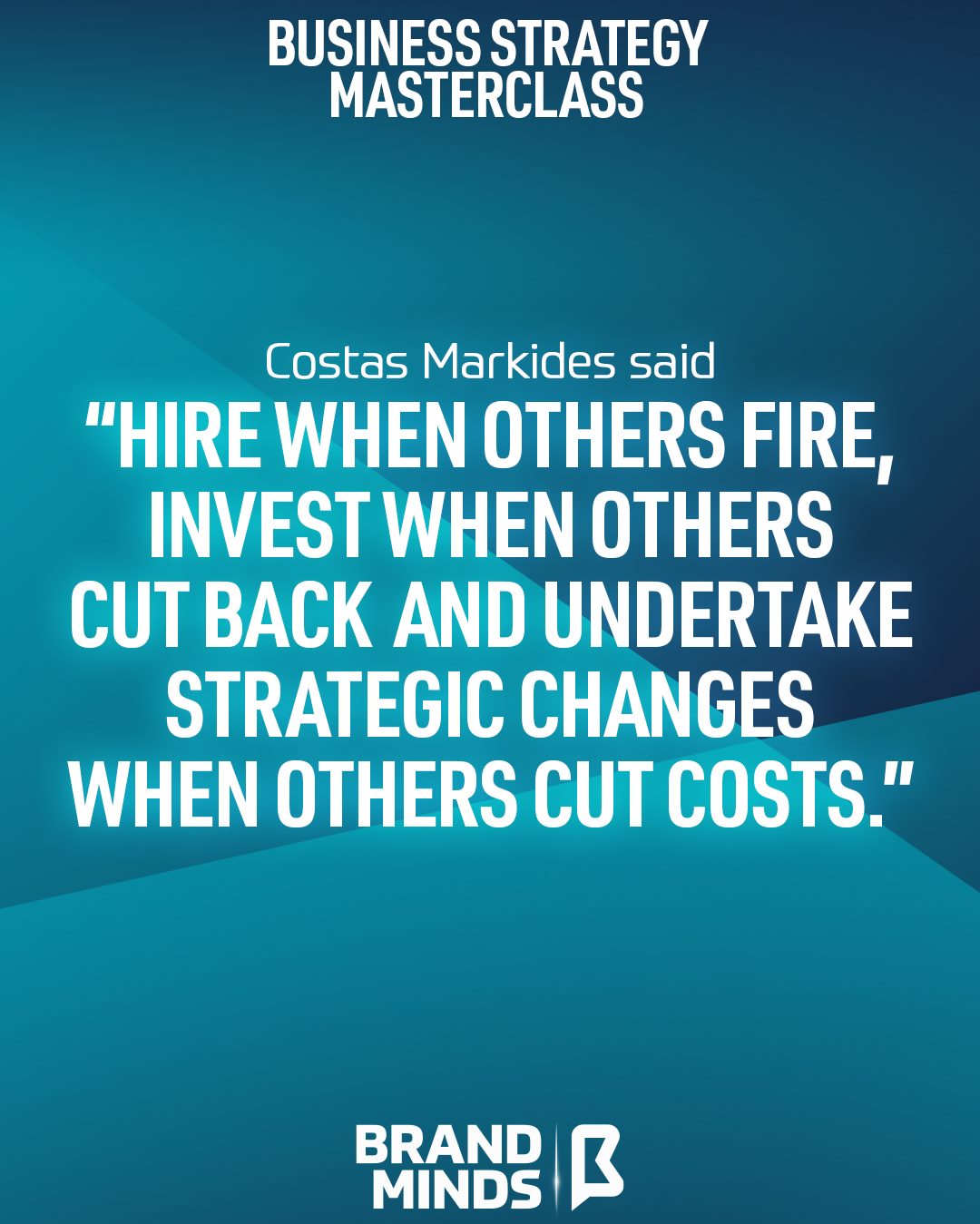
Efharisto***, Prof. Costas Markides!
Yia sou* = Hello!
Pame** = Let’s go!
Efharisto*** = Thank you
Last days to join Business Strategy for Top Executives Masterclass with Costas Markides
Next week on March 23, 2021, founders and entrepreneurs, CEOs and investors, business developers and sales executives will participate in Business Strategy for Top Executives Masterclass with acclaimed Prof Costas Markides.
If you’re looking to turn your business from disrupted to disruptor and find innovative ways to thrive, then this masterclass is for you.
These are the last days you can get your tickets.

The masterclass is held online through live streaming. It starts at 9 am and ends at 5 pm with a Q&A session which is a great opportunity to get answers to your questions. An outside perspective over your particular situation is invaluable. It could light a new pathway that you couldn’t have seen otherwise.
Here is the agenda of Business Strategy for Top Executives Masterclass:
Session 1: STRATEGY IN A VOLATILE WORLD
Success doesn’t come by chance or fall in your lap. It’s the result of a well-thought strategy and an excellent implementation plan.
You know how they say about overnight success?
This overnight success has taken ten years of hard work and perseverance.
That’s why you need a strategy for your business. And given the volatile nature of the world we are living in, even more so today.
Every successful business has a successful strategy. Remember: strategy before tactics.
Amazon’s main strategy is to focus on their customers. But the global leader of the ecommerce market doesn’t just listen to its customers.
Year after year, since 1997, Amazon sets out to delight its customers.
And that’s the drive pushing every improvement and product or service that the company has ever made: its search recommendation engine, AWS, one-click purchase, Alexa and so on.
Join the masterclass to upgrade and improve your business strategy!
Session 2: STRATEGIC AGILITY IN TODAY’S WORLD
There has never been a better time to go agile in business. Times are changing quickly and the business environment must adapt and keep up.
In 2014, consulting company McKinsey & Co introduced two new dimensions to their organisational surveys: speed and flexibility.
They described the companies that combined both as agile.
Companies that are agile can adapt quickly to new challenges and opportunities. They mobilize quickly and show a strong relationship between organizational health and the creation of value. They move to market faster than traditional companies and have lower costs.
Join the masterclass to discover ways to create strategic agility for your business!
Session 3: MOBILIZING THE WHOLE ORGANISATION FOR STRATEGY EXECUTION
Whether you lead a business of thousands of employees or a small team of five, you need to be aware that for the strategy to work, everyone must be on board.
Every employee, from front desk to product development to supplier quality has to understand the strategy, contribute to its implementation and be on the same page with everyone else.
Learn from strategy expert Costas Markides how to mobilize your organisation for strategy execution.
Session 4: NEW CHALLENGES FOR LEADERS
One of the abilities that successful leaders need to develop or acquire is the ability to see around the corner.
What does that mean?
It means to have one foot in the future.
It implies to be able to spot trends before they go mainstream and take steps to leverage them to the benefit of your business.
It’s called strategic foresight. Strategic foresight allows companies to prepare for the future.
What challenges do leaders have to face in the near future?
Is it employee high turnover due to low engagement levels in the context of the work-from-home situation?
Everything going digital and online?
Changes in customer behaviour?
Attend the Business Strategy for Top Executives to find out!
Join the Conversation
We’d love to hear what you have to say.
Get in touch with us on our LinkedIn Page, Facebook Page, Twitter or TikTok.
McKinsey 7S model of Nokia – where the company went wrong
From a cell phone pioneer to being acquired by Microsoft in 2013, Nokia is a case study of organizational failure. Let’s analyze where the company went wrong by applying McKinsey 7S model.
McKinsey 7S model is a business framework which can be used to analyze organizational effectiveness. According to the McKinsey model, the organization is a complex ecosystem consisting of seven interconnected factors: Structure, Strategy, Skills, Staff, Systems, Style and Shared Values.
The model is also a blueprint for organizational change.
To show you how you can use the McKinsey model 7S for the benefit of your organization, I will analyze mobile pioneer Nokia at the time of its demise, namely 2011-2013.
Here’s a brief background story:
In October 1998, Nokia became the best-selling mobile phone brand in the world with an operating profit of almost $4 billion. The best-selling mobile phone of all time, the Nokia 1100, was created in 2003. Five years later, Apple introduced the iPhone. By the end of 2007, half of all smartphones sold in the world were Nokias, while Apple’s iPhone had a mere 5% share of the global market.
In 2010, attempting to drive Apple out of the market, Nokia launched the “iPhone killer”. The model failed to achieve its goal and was the beginning of the end for Nokia. From that moment on, Nokia embarked on a downward spiral of low-quality phones. In just six years, the market value of Nokia declined by about 90%. The organization was acquired by Microsoft in 2013.
Now that you’re familiar with Nokia’s failure story, let’s analyze the organization before Microsoft made its move to acquire it by applying the McKinsey 7S model.
In my opinion, here are the factors that required immediate change: Structure, Style, Skills, Staff and Strategy.
McKinsey 7S model of Nokia
McKinsey 7S model of Nokia – Structure
Nokia of the era was a top-down line structure organization.
In public speeches given by the organization’s top executives, agility and being nimble were mentioned as key competitive advantages.
But it was all talk. The organization’s top management was living in a bubble, disconnected from the company’s technology development departments. Communication was one-way and teams were not empowered to contribute to the organization’s strategy.
To adapt to the new technological environment and compete with Apple, a powerful tech company, Nokia should have taken steps to change its structure from top-down hierarchical to decentralized and agile.

Instead of organizing employees in silos, with no communication and collaboration between them, the company should have placed its employees in teams, with every team working to achieve a common goal.
Team members should have been empowered to speak up, come up with solutions and work independently.
McKinsey 7S Model of Nokia – Style
In McKinsey’s model style refers to culture. What was Nokia’s culture at that time?
As per the 2015 paper Distributed Attention and Shared Emotions in the Innovation Process: How Nokia Lost the Smartphone Battle, Nokia suffered from organizational fear, status (We are no 1), in-house politics and temporal myopia.
Top managers had business backgrounds and lacked technological competence. Employee morale was low.
As the saying goes, culture eats strategy for breakfast. Top management should have adopted a transformational leadership style where the leader’s goal is to transform the organization so that it’s constantly improving.
Transformational leaders create a vision of the future that they share with their teams so that everyone can work together toward a shared goal and vision. Technology is ever-changing. Technology companies must embrace change in order to stand the test of time.
Transformational leadership would have been the best fit for Nokia because it fosters creativity and innovation through collaboration. This type of culture builds and maintains employee motivation and satisfaction and is effective in facilitating organizational change.
McKinsey 7S Model of Nokia – Skills
Nokia didn’t lack talent and didn’t have a skills gap in the company. There were no gaps in know-how or competence.
At its peak, Nokia had one of the top highly-skilled tech workforces in the world.
The company’s hardware and software engineers had designed one of the most successful and iconic cell phones in the world, there’s no doubt about it.
The problem was the top management. Between 2007 and 2010, the position of the Chief Technology Officer (CTO) disappeared from the top management team. Technical managers had left the company and new hires had no technical skills making it difficult for them to understand the technological challenges and the direction in which the company should be heading.
Conversely, top management members at Apple were all engineers. Nokia should have focused on increasing tech skills among C-level executives.
McKinsey 7S Model of Nokia – Staff
At Nokia, people were talking business instead of technology which is quite surprising for a software company.
The organization should have found ways to motivate and nurture its employees appropriately.
McKinsey 7S Model of Nokia – Strategy
Struggling to compete with Apple and adapt to the technological developments that were disrupting the business environment at that time, Nokia top management had to choose between three strategies: optimizing costs and volume, maximizing performance, or maximizing security.
They decided to go with cost optimization which made it impossible to achieve performance in software.
With Apple going for technological innovations and excellency, needless to say, they made the wrong decision.
Conclusion
At its peak, Nokia manufactured 40% of the world’s mobiles. The company had the human resources (skills and staff factors) required to keep innovating and increasing its market share.
Unfortunately, the company’s leadership (style factor) lacked core competences and vision necessary to drive change within the company.
They didn’t allow the tech talent in the company to contribute with valuable insights to important decisions. The company chose the wrong strategy which ultimately lead to its demise.
Join the Conversation
We’d love to hear what you have to say.
Get in touch with us on our LinkedIn Page, Facebook Page, Twitter or TikTok.
What is the McKinsey 7S framework for successful management
What is the McKinsey 7S model explained briefly?
The McKinsey 7S model is a business framework to address the essential role of coordination, rather than structure, in organizational effectiveness.
This business framework states that the organization is not the structure and is a model of organizational change.
Whenever organizations need to adapt to new business environments the hierarchy of the organization (who is tasked with what, who reports to whom, who needs approval from whom etc) is irrelevant.
The organization goes beyond its structure. It’s a complex ecosystem comprised of seven factors which interact with each other and influence an organization’s ability to change.
What are the 7S of McKinsey’s framework?
The seven factors of the McKinsey 7S framework are STYLE, SKILLS, SYSTEMS, STRUCTURE, STAFF, STRATEGY and SHARED VALUES.
For an organization to change successfully, it needs to approach every S factor.
The framework shows that every factor interacts with the other six. The organization cannot make significant progress towards change by focusing on one area and ignoring the rest. The organization must tackle its approach to change by moving into all seven S factors.
Let’s explain every S factor of the McKinsey model.
McKinsey 7S framework – Style
By style, the authors of the McKinsey 7S framework mean culture.
What is organizational culture and why is it essential to an organization’s success?
The culture of a company or organization is a set of shared beliefs, values and practices. The organization’s CEO, founder or top management are responsible for outlining the organization’s culture and hiring the right people that will maintain it.
For many organizations, culture drives success.
Neflix’s No rules policy is at the heart of its culture. The famous entertainment company nurtures employee freedom and encourages responsibility.
At UiPath, the efforts of top management are focused on providing employees with psychological safety beyond anything else.
At Amazon, employees are encouraged to think like an owner.
In every one of these organizations, success is synonymous with innovation and culture is the medium that facilitates innovation.
McKinsey 7S framework – Skills
Skills refers to organizational skills as well as individual skills.
What does your organization do best? What is your organization known for? What are its strengths? Is it creativity and design? Is it distribution or sales?
BMW is known for its innovative engineering and fast engines.
Coca-Cola has one of the most successful distribution systems in the world.
Louis Vuitton is renowned worldwide for its high-quality luxury handmade handbags.
The skills factor is also important to reveal skills gaps in the organization. With the business environment being disrupted by new technologies, organizations face increasing needs to fill skills gaps. They can either hire highly-specialized talent or upskill their current employees.
Another question that organizations must aks is do we need to improve hard skills or soft skills?
It’s an important question because the needs of an organization may shift every few years to follow changes taking place in our society. Read about the top 5 most in-demand soft skills in 2021.
Marketing is an industry where learning never stops. The professional growth and career advancement of a marketer now hinge on his or her desire and ability to learn new things. Read 4 skills that every successful marketer should acquire in 2021.
McKinsey 7S framework – Systems
By systems, the McKinsey framework means all the procedures, formal and informal, that make the organization go day by day.
How does the organization get things done?
Here are some of the main systems that an organization operates to achieve its goals:
- IT
- Financial
- Hiring
- Customer service
- Product development and delivery
- Information management
- Internal communication
- Planning
- Employee evaluation
There is a significant difference between how organizations were doing customer service in the 1980s and how it’s done today.
Organizations nowadays have a slew of digital tools they can use to solve the customer’s requests efficiently – Chatbots, Whatsapp, social channels etc.
McKinsey 7S framework – Structure
The structure factor of the McKinsey 7S framework refers to the way the organization is structured.
Is it centralized, decentralized or a hybrid?
Historically, the first organizations were centralized with one man, ie the founder or the CEO, taking every decision.
Apple under Steve Jobs is an example of a centralized organization where the founder made decisions regarding design, functionality, features etc.
The centralized organization can be very effective and ensures that the founder’s vision is carried out throughout the company and reflected in the product. But when the organization scales up, this type of organizational structure reveals its flaws. The organization is slow to make decisions and adapt to changing circumstances.
Starting with the 1950s, decentralization became the focus of organizations which had achieved a certain level of size and complexity.
Within these organizations, the number of employees had increased and subsequently the number of interactions required to make things work. The size and complexity of these organizations had become a burden and they were in danger of breaking down.
Decentralization was the solution. A decentralized organization is able to make decisions fast and adapt swiftly to its environment.
Other organizational structures are the line structure, the functional structure, the line-and-staff structure, the project-based structure, the matrix structure etc.
McKinsey 7S framework – Staff
Staff refers to the people in the organization and looks into the ways the organization nurtures and develops its employees.
How does the organization motivate its employees? What strategy does the organization employ to hire for diversity? Once diversity achieved, does the organization have an inclusion strategy?
Workforce diversity is a competitive advantage. A team which includes members of different generations, background cultures, interests and talents provides the organization with different insights and perspectives and drives creativity.
McKinsey 7S framework – Strategy
Strategy is defined as the actions a company plans to take to achieve its business objectives.
The plan outlines what (resources), how (specific tools, activities, platforms etc) and why (the reasons behind your choice of a specific resource or tool) the company will use to achieve its goals.
The strategy’s secondary goal is to define how the organization differentiates itself from the competition and create unique value. Learn how to create a strategic plan in 5 steps.
A successful organization must be able to change its strategy to match the current business environment. When organizations fail to see the need to change, they miss out on the opportunity to adapt and survive.
Nokia’s culture of status, shared fear and temporal myopia made the company vulnerable to competitive forces and prevented it to adapt its strategy (more on this in Why did Nokia fail?).
Microsoft, on the other hand, learned from Nokia’s mistakes (Microsoft acquired Nokia in 2014). When Satya Nadella became CEO, his main leadership challenge was to change the company’s culture. In his opinion, “The C in CEO stands for Culture”.
McKinsey 7S framework – Shared values
What is the organization trying to achieve? What is the organization’s social mission? How does the organization respond to the question Why?
In 2009, best-selling author Simon Sinek defined the concept of Why as the purpose, cause or belief that drives every one of us, leaders and employees alike.
Google’s mission is to organize the world’s information and make it universally accessible and useful.
TikTok’s mission is to inspire creativity and bring joy.
BRAND MINDS’ mission is to unite the business world by providing world-changers with the ultimate business experience.
Having a clear mission statement and delivering on it is paramount for a company’s reputation and bottom line. Consumers and employees expect organizations to stand for something. When they fail to deliver, organizations are met with protests and call-outs. For some organizations, change is now coming from employees putting pressure on the management, not the other way around.
Join the Conversation
We’d love to hear what you have to say.
Get in touch with us on our LinkedIn Page, Facebook Page, Twitter or TikTok.
March 2021: Business Strategy Masterclass for Top Executives with Prof. Costas Markides
Dear world-changer,
We have exciting news!
BRAND MINDS is launching Business Strategy Masterclass for Top Executives with London Business School professor Costas Markides.
The masterclass is scheduled for March 23rd, 2021 and will take place online. It starts at 9 am and ends at 5 pm with a Q&A session which is a great opportunity to get answers to your questions.
Check the agenda to find what you will learn at this masterclass:
Session 1: Strategy in a volatile world
Session 2: Strategic agility in today’s world
Session 3: Mobilizing the whole organisation for strategy execution
Session 4: New challenges for leaders
6 benefits of attending Business Strategy Masterclass for Top Executives
![]() BUILD CUSTOM BUSINESS MODELS
BUILD CUSTOM BUSINESS MODELS
Learn to develop custom business models and drive success through innovation.
![]() WORLD-CLASS EXECUTIVE EDUCATION
WORLD-CLASS EXECUTIVE EDUCATION
Acquire a premium learning experience from the former Executive Education Director of London Business School.
![]() EXPAND YOUR COMPANY
EXPAND YOUR COMPANY
Drive growth by exploring new business opportunities through networking with other Top Executive participants.
![]() BECOME THE ARCHITECT OF YOUR BUSINESS
BECOME THE ARCHITECT OF YOUR BUSINESS
Acquire the necessary business tools to plan your company’s future efficiently.
![]() LEARN BUSINESS INNOVATION PRINCIPLES
LEARN BUSINESS INNOVATION PRINCIPLES
Upgrade your knowledge on innovation and disruption to drive business success.
![]() IMPROVE YOUR DECISION-MAKING PROCESS
IMPROVE YOUR DECISION-MAKING PROCESS
In today’s fast-paced environment, making good decisions fast is an invaluable skill.
Are you a CEO, investor, business owner, sales expert, marketing manager, HR director or strategy specialist?
Then this masterclass is for you!
Discover additional benefits for you and your business

Prof Costas Markides – One of the world’s foremost experts on strategy & innovation
A business author and strategic thinker, Costas Markides has been a professor at London Business School for the past 30 years teaching Strategy & Entrepreneurship.
As the holder of the Robert P. Bauman Chair of Strategic Leadership at London Business School, Costas Markides’ role is to create innovative educational approaches that shape the next generation of strategic leaders.
He received his MBA and DBA from Harvard Business School and served as the Faculty Director of Executive Education at London Business School until 2016.
His expertise includes strategic innovation, business model innovation, diversification and international acquisitions.
A skilful professor, he won 5 awards recognizing his excellence in teaching and innovation in learning over the past ten years.
He is the bestselling author of Fast Second: How Smart Companies Bypass Radical Innovation to Enter and Dominate New Markets and Game-Changing Strategies: How to Create New Market Space in Established Industries by Breaking the Rules.
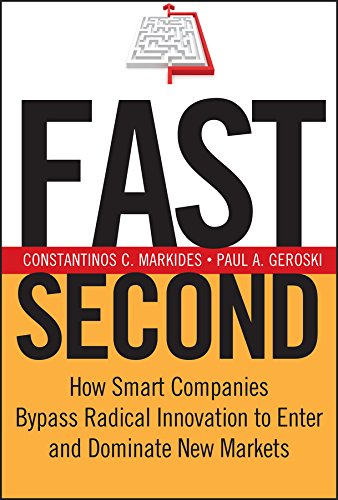
Fast Second illustrates how to determine which new markets have the potential to be successful and how to move into them before the competition does, when to make a move into a new market, how to scale up a market, where to position a company in the market, and whether to be a colonizer or a consolidator.
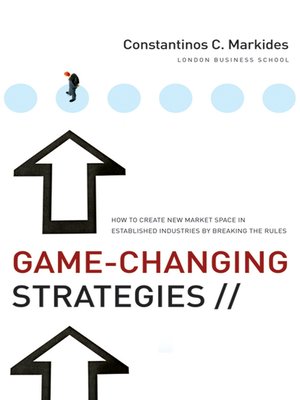
Game-Changing Strategies presents practical ideas on how established firms could not only discover new radical business models but also grow them next to their existing business models.
His forthcoming book is entitled Architects of Change and is set to launch in April 2021. The new book explores how individuals could design innovative solutions to social problems in ways that make them easily scalable.
Costas is currently serving on several editorial boards of strategic management journals among which is Sloan Management Review, the research-based magazine published at the Massachusetts Institute of Technology (MIT).
Have a long term strategy, especially in a fast-changing world; listen to the customer, but don’t always do what they say; don’t feel threatened by disruptive innovation; promote innovation in the face of core resistance; and, finally, do your best to bridge the know-do gap.
COSTAS MARKIDES
Do you want to get your company ready for an amazing 2021?
Access now BRAND MINDS Business Strategy Masterclass for Top Executives with prof Costas Markides!
Join the Conversation
We’d love to hear what you have to say.
Get in touch with us on our LinkedIn Page, Facebook Page, Twitter, TikTok or YouTube.
What is the 5 Whys Technique?
On this page
- Definition of the 5 Whys Technique
- Origin
- Example
- 6 steps to a successful 5 Whys Analysis
- 5 Benefits of the 5 Whys strategy of problem-solving
- 11 rules to perform the 5 whys technique correctly
Is your team failing to meet deadlines? Or doesn’t produce the expected outcomes? Your organization is dealing with a specific problem?
Use the 5 Whys technique to get to the bottom of it and closer to a solution.
What is the 5 Whys Technique?
The 5 Whys Technique is a simple but great tool you can use to get to the root of a problem. This technique explores the cause-and-effect relationships underlying a particular problem by repeating the question Why? five times. Each question refers to the previous answer.
Origin of the 5 Whys Technique
The technique was originally developed by Sakichi Toyoda, the Japanese industrialist and inventor who started the Toyota family companies. Sakichi used the 5 Whys tool within the Toyota Motor Corporation during the evolution of its manufacturing methodologies.
Example of a 5 Whys Analysis
Let’s say your team has been failing to meet their target for the past five months. Here’s how to apply the 5 whys analysis to your situation:
Problem: Team failed to meet the target for five months in a row
Why?
Two team members were slow to deliver.
Why?
They don’t know how to use the systems.
Why?
When they were hired, they did not receive instructions on how to use them.
Why?
The manager who was in charge of teaching them had to leave the office for a few days to take care of a family situation who required his urgent attention. No other person was assigned to teach them.
Why?
There is no system in place which allows managers to quickly appoint someone else when urgent situations arise.
Now that you have discovered the root cause of the problem, you can easily design a solution to eliminate this problem.
Here is another example of applying the 5 Whys technique:
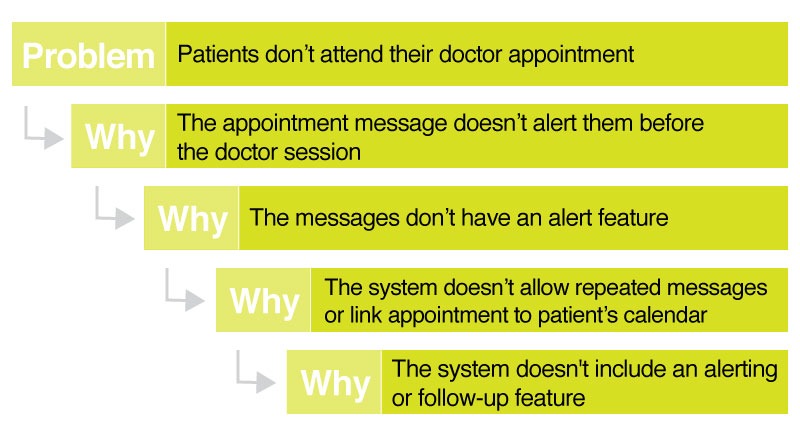
Source: designorate.com
6 steps to a successful 5 Whys Analysis
- State the specific problem that needs to be addressed.
- Gather your team in one room.
- Use a whiteboard.
- Write the specific problem on the whiteboard.
- Ask the first why and invite team members to provide relevant and specific answers.
- Repeat the whys until the root cause of the problem is identified.
- Develop an action plan to remove the problem from the system.
- Break the action plan into tasks which you assign to each team member.
5 Benefits of the 5 Whys strategy of problem-solving
![]() Identify the cause, not just the symptoms.
Identify the cause, not just the symptoms.
![]() Perform an evidence-based analysis.
Perform an evidence-based analysis.
![]() Eliminate issues in your system for good.
Eliminate issues in your system for good.
![]() Seek improvements and welcome change.
Seek improvements and welcome change.
![]() Build a culture that embraces progress.
Build a culture that embraces progress.
11 rules to perform the 5 whys technique correctly
- Define the problem as accurately and completely as possible.
- Require from your team members complete honesty in answering the questions.
- Be determined to get to the bottom of the problem and resolve it.
- Don’t stop at symptoms, go beyond them.
- Ask the right questions.
- Support your team into being honest.
- Be open to hearing answers that you might not like.
- Five is just the rule of thumb, continue to ask questions until you get to the root cause.
- Ensure that all answers are based on facts and knowledge.
- Assess the process, not people.
- How do you know when you have found the root cause? When eliminating it, you will have prevented the error from occurring again.
Are you going to use the 5 Whys technique?
Join the Conversation
We’d love to hear what you have to say.
Get in touch with us on our LinkedIn Group, Facebook Group or Twitter.
#Romanovs100 – Digital Storytelling At Its Best
This article explores one of the best examples of digital storytelling I’ve seen lately – #Romanovs100.
Whether in spoken or written words, people tell stories to share knowledge, inspiration and to feel connected to the other members of their community.
We’re now in the digital age.
How has storytelling changed?
How do brands make use of the available digital tools to tell stories?
Here is the best example of digital storytelling – #Romanovs100.
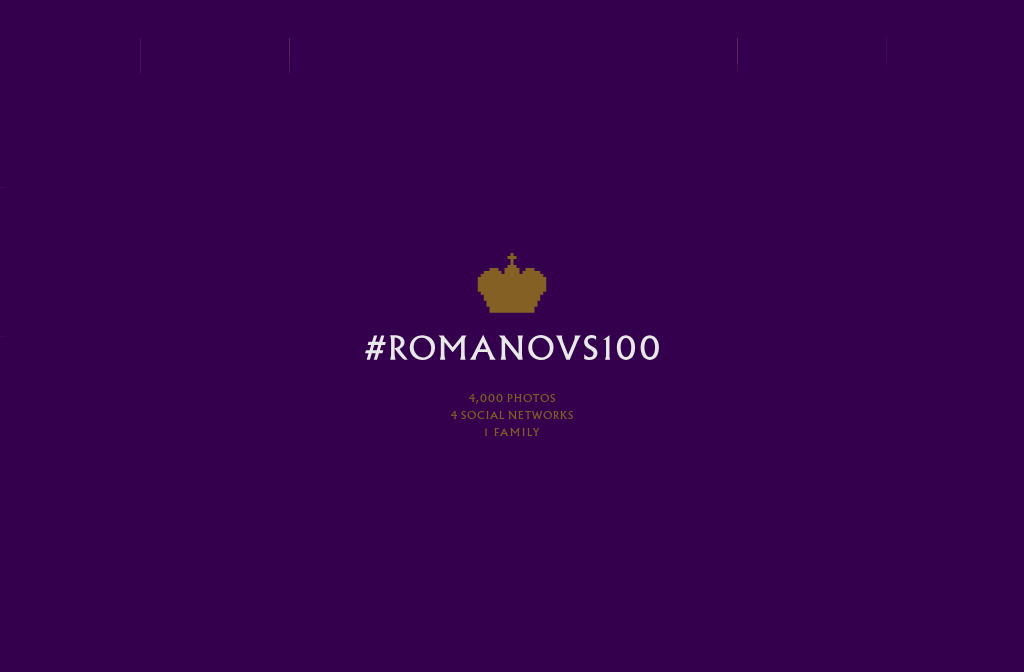
source: #Romanovs100.com
Nicholas Romanov holds a special place in the history of the Russian Empire. He was the last Tsar and had a tragic and violent death at the hands of the Bolsheviks who executed him, his wife and his five children on July 17, 1918.
To pay tribute to the Romanovs, the Russian TV channel RT created and produced #Romanovs100.
#Romanovs100 is an educational project designed to bring to light a part of Russian history which has been erased from the history books by the Soviet rule.
The inspiration for this project came from the Romanovs themselves – they were pioneers of photography. In the early 20th century they owned the world’s first portable Kodak cameras and captured almost every meaningful event in their lives.
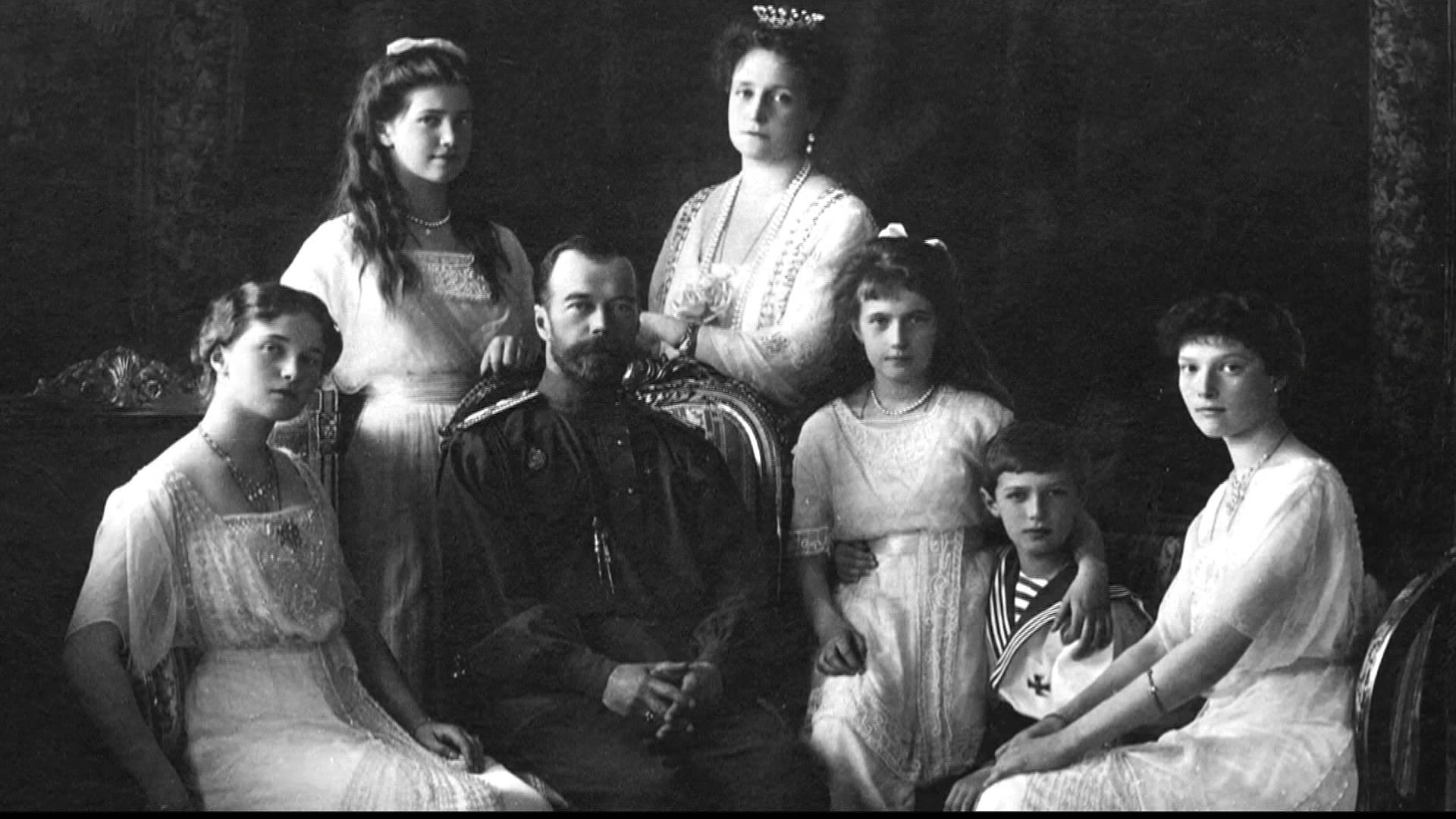
The Romanov family / #romanovs100.com
Fortunately, the Romanov archive has been preserved. The team unearthed over 4000 photographs which detailed the family’s private life.
Let’s see how #Romanovs100 came to life!
Campaign Goal:
Tell the story of the Romanovs, the Russian Empire’s last royal family with the purpose to educate the audience on decades of unknown history.
Campaign Tools:
+4000 turn of the Century black and white photographs taken by the Romanov family members.
Campaign Strategy:
Combine the visual language of photography with the digital reality of social media.
Campaign Mediums:
- Website: https://romanovs100.com/
- 4 social networks: Facebook, Instagram, Twitter, YouTube with each account showcasing its own narrative, format and content.
10 Creative Directions:
1. Facebook
180° retro images in spherical view, 3D immersive experience.
2. Instagram
Two accounts, one of the royal dog, Joy.
3. YouTube
42 short documentary-style videos
4. Twitter
Five accounts featuring “real-time” blogs by Tsar Nicholas II himself, his wife Alexandra, their family doctor and their four daughters collectively referred to as OTMA (Olga, Tatiana, Maria, Anastasia).
We’ve played bezique with Nicky as usual until 10:30pm, then I went to sleep. Now they say we have to get up and go downstairs. Is this an evacuation? #Romanovs100 pic.twitter.com/OdZoPMTpRi
— Alexandra Romanova (@EmpressAlix1917) July 16, 2018
Alexei also plays endless games of draughts, bezique and chess with mama and papa. His leg is getting better, but very slowly #Romanovs100 pic.twitter.com/ZhLTkIYVlC
— The Romanov Sisters (@OTMA_1917) July 8, 2018
5. AR photo album
A limited print edition of the project using AR technology to create an interactive history book.
Romanovs100: AR family photo album (Extended version) from #1917LIVE on Vimeo.
6. Video teasers
Using 8mm & 16mm retro cameras and authentic stage props, the team reconstructed several of the Romanovs’ original photographs, setting the still images in motion.
#Romanovs100: The Snow Tower (TRAILER #1) from #1917LIVE on Vimeo.
7. Ambrotype posters
Photo teasers using 160-year-old ambrotype photography technique.
How it’s done:
#Romanovs100: 19th century photo technique in action from #1917LIVE on Vimeo.
The ambro-photograph:

source: #Romanovs100.com
8. Original soundtrack to illustrate the project in YouTube and Facebook videos, teasers and trailers.
9. VR animation
A music video combining photos & VR Animation.
10. Colourization contest
Fans and followers were invited to enter the world’s first-ever digital colourization.
History in color: Romanovs100 digital colorization contest case study from #1917LIVE on Vimeo.
Campaign Results:
- 25 million impressions;
- 55,000 fans and followers;
- +1 million post engagements;
- +1 million video views;
- 500,000 minutes watched;
- #Romanovs100 on Twitter grew 2000%.
Global media coverage:
Sky News, BBC Newshour, History Extra, The Sunday Telegraph, Quartz, Daily Mail, Tatler, Culture Trip.
Awards:
- Best Images at the 2019 Shorty Awards;
- Silver at the 2018 Clio Entertainment Awards;
- Nominee at Social-Best Photography & Graphics at the 2019 Webby Awards;
- Merit at the 2019 ADC Awards;
- Most Innovative Use of Social at 2019 The Drum Social Buzz Awards;
- Best Original Content Series at the 2019 Digiday Media Awards Europe.
Join the Conversation
We’d love to hear what you have to say.
Get in touch with us on Facebook Group and Twitter.
10 Ideas to use Facebook Live in your Communication Strategy
If you are a marketer thinking about starting to go Live on Facebook or looking for fresh ideas to engage with your audience, this article is for you!
Facebook Live has passed the 2-year mark since being introduced as new feature to the Facebook universe. Facebook’s goal was for Live to become a new way for users to connect and share in the moment with friends and loved ones.
Seeing the numbers below, we say Facebook has achieved this goal:
- Live has become a core part of the Facebook experience with 3.5 billion sessions since 2016 according to the social platform;
- Pages have increased their Live broadcasts 1.5 times over the past year;
- Live videos are generating 6x more interactions than regular video.
Here are more statistics via Facebook:

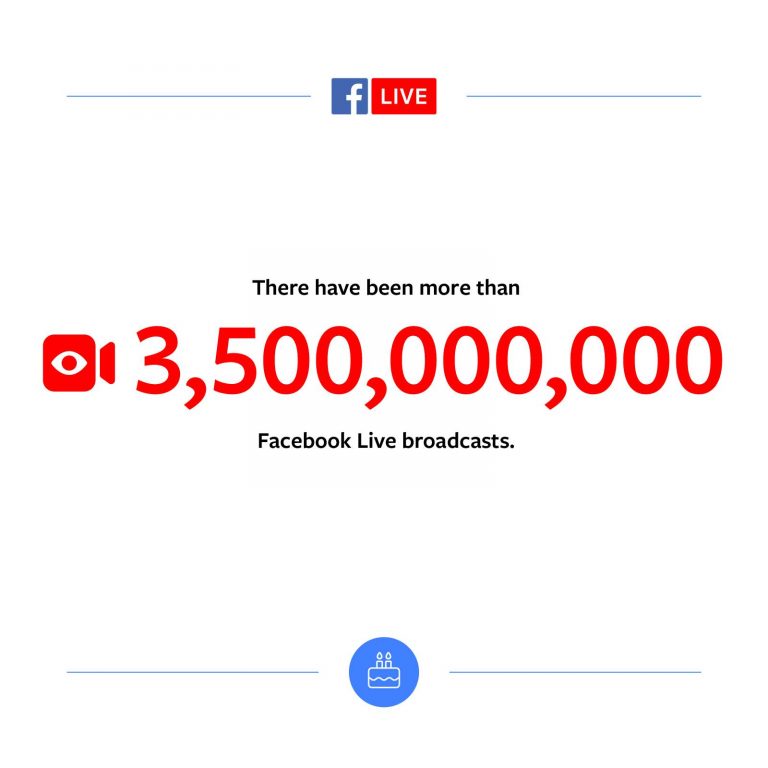
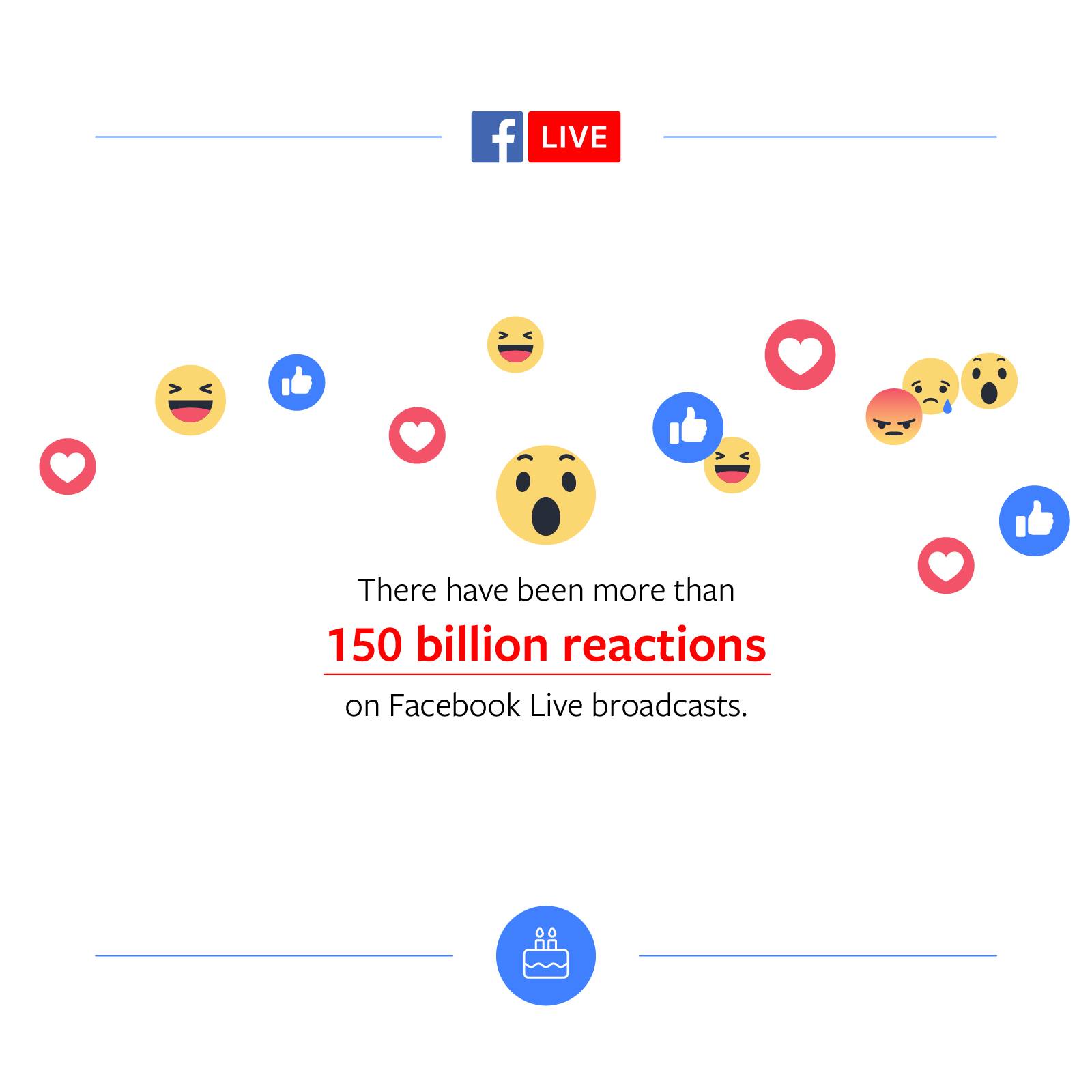
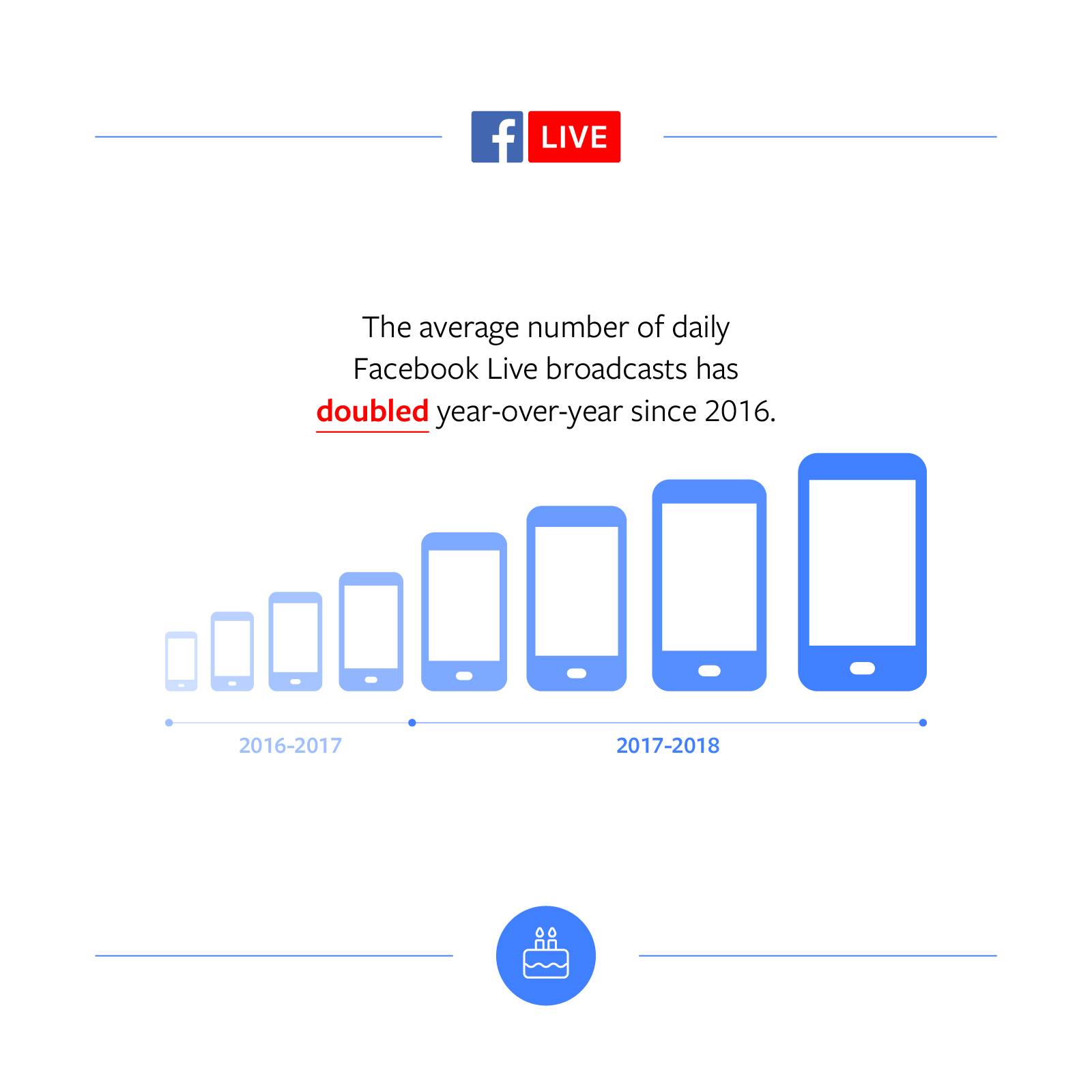
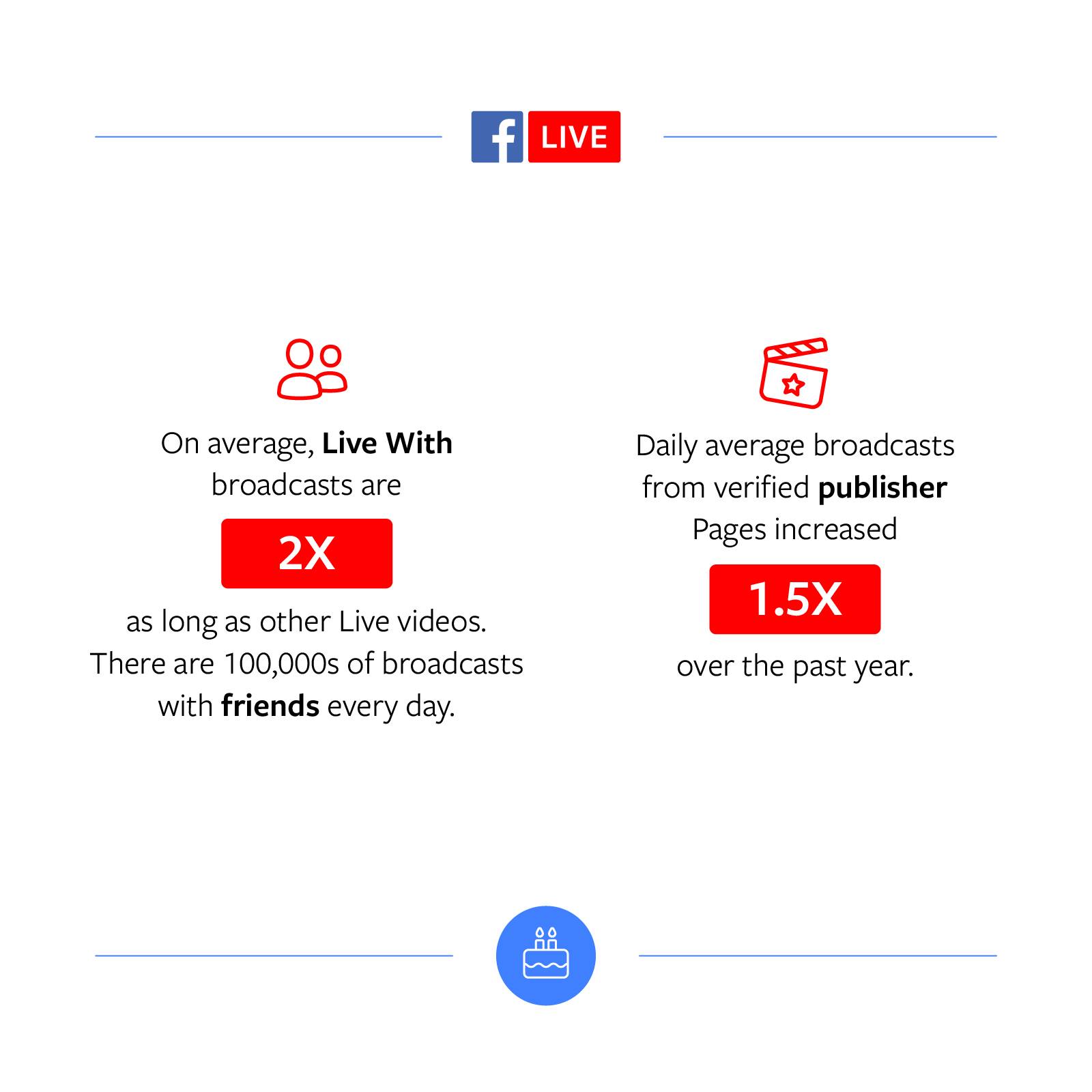
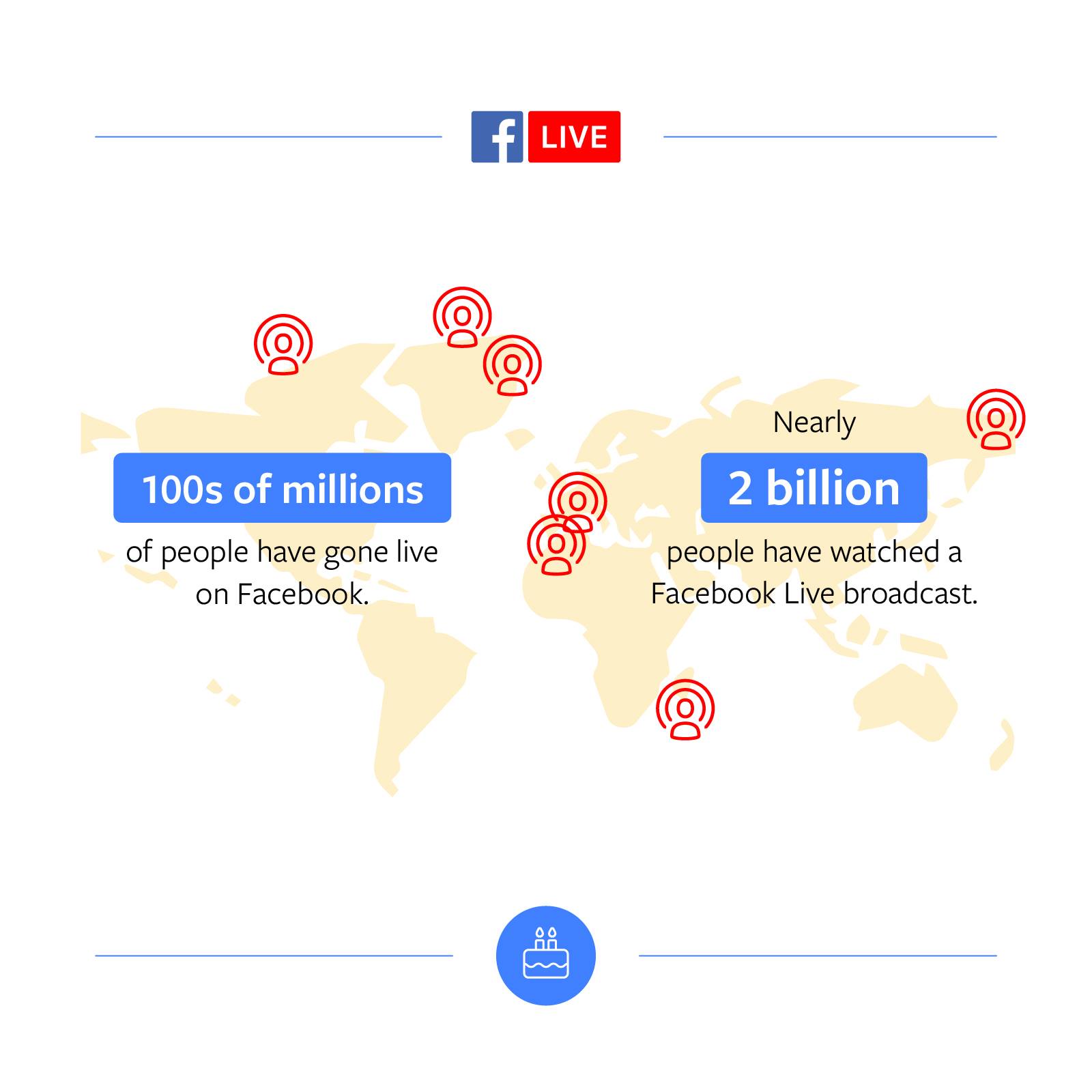
Facebook Live is even bigger than YouTube which is quite surprising:
 You will find more infographics at Statista
You will find more infographics at Statista
What to use Facebook Live for – 10 ideas
1. New product release
Going Live on Facebook to show your audience your new product is a great way to increase product and brand awareness.
2. A new blog post
Instead of writing a post announcing your latest blog post, go Live and talk about the subject with your audience. Don’t talk about everything in your blog post, leave one-two points or insights out and invite your followers to discover them by reading it.
3. Announcing a new client/collaboration
Taking up a new client or starting a new collaboration is a good opportunity to go Live: it allows your audience to stay updated with information regarding your brand.
4. Behind the scene/How it’s made
Use Facebook Live to go behind the scene: show what it’s like for your team or staff to prepare for an event. Or show your audience how your product is made: take them on a tour of your factory.
5. Take questions
Do your customers or followers have a lot of questions regarding your products? Or have you noticed that some questions are asked more frequently than others? Let your audience know you will answer all their questions during a Facebook Live session.
6. Do interviews
Interviewing experts or influencers in your niche on Facebook Live is the perfect way to raise your brand by association: the interviews provide value to your audience and help your brand stay top-of-mind.
7. Comment other events live
Whether it’s an industry fair, conference, demonstration, comment it on Facebook Live. Don’t be afraid to provide your input and insight!
8. Try a new experience
Curiosity is a powerful emotion so if you let your audience know you are going to do something new (nothing illegal!), your audience will tune in to share your experience.
9. Provide value
If you are an experienced professional or expert, you can share your insights and recommendations with your audience: teach, show and help.
10. Poll your audience
Asking questions on a specific subject is a great way to show your audience your brand is interested in their opinions. Ask their help on choosing a name for a project or a new product line. Let them know you value their input and build trust for your brand.
5 pieces of advice for entrepreneurs in 2018, the media agency point of view
Having the right media mix and campaigns represents a very important moment in a company’s marketing strategy. Choosing the right track might be hard to find, therefore every business needs a good media consultant. A point of view written by Razvan Varabiescu – CEO Dentsu Aegis Network Romania.

- Disrupt Or You Will Be Disrupted.
In a digital economy you have to look at things as a start up or as a business turnaround. If in the past because of the volume of media budgets one could afford to “ignore” the small competitors who due to the financial entry barrier did not afford big reach on TV or other kind of exposures, today, regardless if you are a startup or a 20-year market leader, one can not ignore the new environments, the opportunities that appear, you have to be forever ready to disrupt and to think things like a start up.
- Content Is King
Today, the consumer has an overwhelming number of options on how to consume media. Whether we are talking about digital radio or analogue TV or live vs. registered by Netflix, Amazon Prime, HBO Go, YouTube etc., it is very important to integrate the product into the content. The environments are evolving and it is increasingly difficult to predict where and how consumers consume media. However, it is certain that the relevant content for them is different, so the big players continue to invest permanently in premium and unique content. The more we manage to integrate the media into the content, the more we make sure that we will not be ignored.
- Data Is The New Currency
Everybody talks about our data. However, data collection is still at the beginning. 92% of the data we have today is gathered over the past 2 years and probably the trend will continue. It is still not too late to collect data on our consumers. Why? This is simple: in the future when all the media acquisition is done programmatically, the data we have will make the difference. Imagine a world where the cost per thousand is given by supply and demand, the difference being made by how many consumers I need to reach to meet my marketing goals, sales, etc.; the most effective campaign will be the one that achieves its goals by reaching as few people as possible by getting in contact with those who are willing to act. But how do we figure out who they are? Using the data, obviously.
- Strategic Thinking At The Core
As media moves towards programmatic, the price pressure will drop and a relevant and different strategy will make a difference. If in the past we were all strategists and we had strategies for media, PR, BTL, communication, marketing, etc. all today’s touchpoints are interconnected and need to have a single strategy able to deliver in all communication disciplines. We cannot have a TV campaign anymore and pray that someone writes a post on a blog about the product, we cannot pay 2 bloggers hoping to get the story. Things must be thought from the beginning, interconnected, measured. The strategy will make the difference exactly as low prices on TV was the law.
- Attract The Right Talents
This is probably another cliché. But we have to realize that the Y generation is the generation that will provide the main workforce for the next 20 years. 54% of companies will work with online workforce over the next 5 years. It’s the savvy digital generation. Every hour a car replaces the work of a man. The main problem we have in the coming years is to succeed in attracting and securing talent in the organization. For this, every manager should ask himself how can he change organizational culture to adapt to the new needs of the millennial generation. Let’s not forget we’re talking about a sensitive generation called the Snowflake Generation.
Authenticity in marketing versus authenticity in business
“Authenticity is the key component of what makes social media so successful for businesses. Authentic social media is the modern day testimonial: It allows users to interact with businesses in real time, but also creates an open space for conversation and feedback. If a person is having a hard time receiving assistance from a business’s customer service, for instance, all they need to do is tweet at them for a response. Other users can get involved depending on the severity of the situation, forcing all sides to be accountable,” wrote Kelly Samuel for Forbes.
A research shows that 90% of consumers read less than 10 reviews before already forming an opinion about a business. In an age of ever-advancing technology and communication, online reviews remain an important part of consumer research and decision-making. Why? Because they appear to be honest and authentic. We want brands and products in whose statements we can trust.
“There is tremendous power behind authentic and honest messaging. When the story resonates, the audience listens, and when we hear what they are saying and respond with thought, the conversation continues and we all benefit. Brand honesty and authenticity build trust for your content marketing efforts not because you are saying what they want to hear, but because you’re saying what’s real,” wrote expresswriters.com.
Moreover, we think of an authentic company as one that stays true to their core values, principles, and overall brand. Therefore, authenticity is especially important for branding. “If a company decides they want to represent themselves in a way that is different than they normally do, they run the risk of losing the trust of their clients and therefore their integrity and authenticity. Honesty is a quality every company should aspire to have, but not everyone is transparent, which creates a climate of dishonesty,” said elevatemybrand.com.
Marketers must understand that putting brand truth into practice starts with understanding perceptions. Using in-depth research and insights to quantify perceptions and behaviors, will help you know exactly what drives your audience and their interactions with your brand, vastly improving your chances of appealing to the new consumer – who expects nothing less. Using complex data to maintain an audience-centric approach and reach consumers with the right message, in the right place, at the right time. Rather than relying on assumption and a vague understanding of your target audience, the data in existence today is transforming what’s possible by pointing us in what we know to be the right direction.
“Authenticity comes down to giving people a reason to care. Consumers want to care – they want to believe that their purchase is making a difference somewhere, somehow, that the brands they are supporting with their hard-earned dollars are living out the values that they believe in. People respond to honesty, integrity, enthusiasm and love, and they can spot frauds from a mile away. It’s never too late to look for the authenticity that exists within your business and to capitalize on it with thoughtful, engaging campaigns,” explains go.tenthcrowcreative.com.
AdAge.com puts the finger on the reality but offering you the great piece of advice: Don’t say you are authentic — be authentic. “Straight-talking” and “plugged-in” are both better word choices to personify your brand. “Attributes should be sufficiently nuanced to drive differentiation through creative expression in a way that will foster a real audience connection. Skittles is one of my favorite examples. Brand attributes for the company’s “Taste the Rainbow”campaign were unpredictable and irreverent. They provided a clear and genuine brand POV that resulted in fun and crazy — not annoying — creative that engaged its audience while driving brand lift and sales,” concluded Jill Byron.
How to speak marketing for the Generation Z?
If you still haven’t figured out the Millennials yet is high time you do it, because there is a new generation coming your way: one that is even younger and closer to technology then the Millennials. Unlike Millennials who are stereotyped as self-involved and demanding, the New York Times calls Gen Z “conscientious, hard-working and mindful of the future.”
According to yourcareerintel.com, more than a quarter of America’s population belongs to Gen Z, giving it a slight edge in size over Baby Boomers (23.6%) and Millennials (24.5%), reports US Consultancy Sparks and Honey. While much of this generation is still in their teens, they’re eager to start working. Parents of Gen Z are encouraging their children to find jobs early and independently, without their help. “Gen Zers are highly driven to achieve and more than half of all high school students are eager to gain independent job experience. College students are loading up on internships and summer positions to hone in on their dream job post-college,” added yourcareerintel.com.
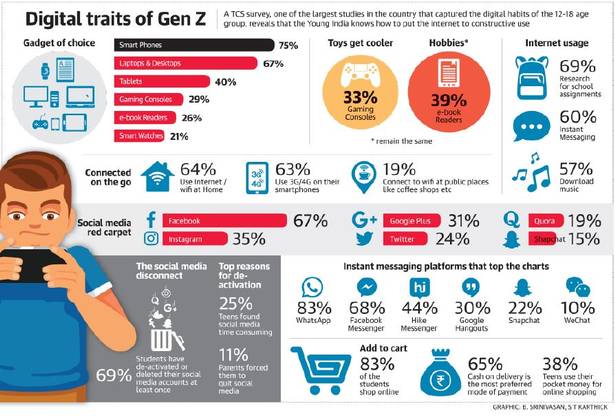
source: The Hindu
Who are they?
According to Wikipedia, Generation Z or Gen Z (also known as iGeneration or iGen, Post-Millennials, or Homeland Generation) is the demographic cohort after Millennials. Currently, there are numerous additional competing names used in connection with them in the media, demographers and researchers typically use the mid-1990s to mid-2000s as starting birth years. At the present time, there is little consensus regarding ending birth years. Moreover, most of Generation Z have used the Internet since a young age, and they are generally comfortable with technology and with interacting on social media.
“Gen Z lives in a world of continuous updates. Gen Z processes information faster than other generations thanks to apps like Snapchat and Vine. Thus their attention spans might be significantly lower than Millennials. Gen Z can quickly and efficiently shift between work and play, with multiple distractions going on in the background…working on multiple tasks at once. Gen Z are entrepreneurial and know the true value of independence, and knowledge is no exception here. If a Gen Z’er knows they are capable of learning something themselves, or through a more efficient, non-traditional route, you can bet they’ll take the opportunity,” wrote Huffington Post.
Meagan Johnson, a generational expert, speaker and author of From Boomers to Linksters: Managing the Friction Between Generations at Work, defines anyone born after 2002 (and therefore post-millennial) as the Linkster generation. “We chose the term Linkster Generation because it is the first generation to be linked into technology from day one. Millennials brought technology into the cultural focus and have pushed other generations to use technology. However, there are Millennials that can remember using dial up or even a life before social media,” Johnson told The Independent.
Therefore, the Linkster population – estimated to make up 18 per cent of the world’s population – grew up with social media, smart phones and apps. According to Johnson’s intervention for The Independent, the Linkster Generation may never hold a textbook, read everything from a tablet and never learn cursive writing and it may never write a check or walk into a traditional bank.
When it comes to their consumption on social media, Business Insider quoted the data gathered by a study conducted by the research firm 747 insights, in partnership with consumer research platform Collaborata, showing that only 49% of Gen Zers agree with the statement “Social media is an important part of my life” — a truth 61% of Millennials admit to. However, nearly 60% of both generations are concerned that social media is too public and that their posts could come back to haunt them. For Gen Z, this concern has changed its behavior: Members favor Snapchat in part because of the strict control over who can see their posts.
More on the study’s results you can read here.
Moreover, in November, a Piper Jaffray survey found 47% of teens consider Snapchat their favorite social media platform, up from 35% the year before. Instagram was the preferred platform for 24% of teens, the same number as one year earlier. Meanwhile, only 9% of teens chose Facebook — a decline of 4% from 2016. And that just after in September, market research firm eMarketer estimated that the number of Facebook users between the ages of 12 and 17 would be to fall 3.4% to 14.5 million people by the end of the year.
Gen Z is pragmatic and realistic, but they also believe it is possible to achieve their “dream job” and build a career doing what they love. Nearly a third of Gen Z (32%) said their greatest aspiration is to be at their dream job 10 years from now, according to Fortune. They’re realistic about how tough it may be to find this job, however. An equal amount (32%) say that finding a job is their top concern.
All of these data and more must be very well looked at and perceive by marketers in order to make sure that their campaigns will fit like a glove the wanted target.
How relevant is still TV for your brand?
We are smarter and smarter consumers, more up-to-date with everything that is new and happening in the world of technology, people constantly changing and improving their laptops, mobile phones and software that they are using. Moreover, 2017 proves to be the first year that the media investments in digital are surpassing the TV ones. In this context, it’s only natural for a CEO or a marketing specialist to wonder how relevant is still TV for the brand they are taking care of?
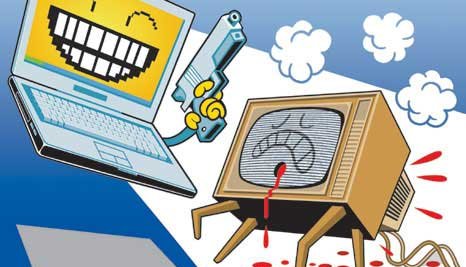
In other words is video killing the radio star? Or is it a non-subject that the specialists are over-exaggerating talking about? What do you think? Well, this is what we think.
First of all we believe that there is not a general answer of yes or no. The right answer for your brand will come from your target: who are they, what are their consumption preferences, their passions, hobbies, desires, etc. Better knowing your target will give you the right answer. Because if you are looking at the younger generation the answer is pretty easy, but if you are targeting the Millennials or the older generation you will have for sure another look at the situation and things will not seem that much black and white.
Along with the channels and devices available for watching TV, the ways for brands to reach consumers through the medium are proliferating. Quoted by Marketing Week, Otto Rosenberger, CMO at Hostelworld.com, believes that TV buying is changing, and with good reason. He says: “It really always starts with being obsessed about where the customer is. It’s about where they are and what drives them, which drives our creative and media decisions.” Research released by Ofcom earlier this month shows that while live television remains hugely important, catch-up TV viewed via the internet and programming premiered online are taking up an increasing share of viewing time for younger audiences in particular. It reveals that today, only 50% of 16- to 24-year-olds’ TV consumption is through live television, rising to 61% for 25-to 34-year-olds.
“The overarching shift, therefore, is in the power of technology and the internet. It is not only changing the way people watch TV, it is also creating a significant change in the way TV advertising is being traded towards targeting specific segments of audiences known to be watching rather than programmes that research panel data suggests they might see,” explains Marketing Week.
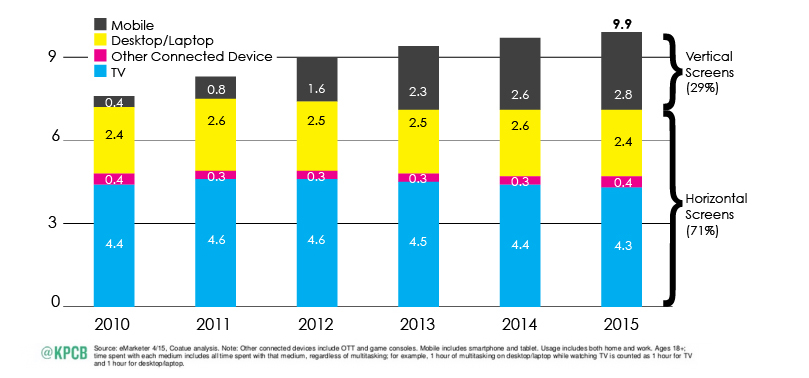
Not a long time ago, Turner Broadcasting and Horizon Media partnered on with marketing-analytics company MarketShare, which meta-analyzed thousands of marketing optimizations used by major advertisers from 2009 to 2014. MarketShare’s analysis found that TV advertising effectiveness has remained steady during that time period and outperforms digital and offline channels at driving key performance metrics like sales and new accounts. The study also showed that networks’ premium digital video delivered higher than average returns when compared with short-form video content from non-premium publishers. More on the main results you can read here.
Moreover, we need to think about the fact that a deep investigation of the decision journey often reveals the need for a plan that will make the customer’s experience coherent—and may extend the boundaries of the brand itself. The details of a customer experience plan will vary according to the company’s products, target segments, campaign strategy, and media mix. But when the plan is well executed, consumers’ perception of the brand will include everything from discussions in social media to the in-store shopping experience to continued interactions with the company and the retailer.
“Consumers’ perception of a brand during the decision journey has always been important, but the phenomenal reach, speed, and interactivity of digital touch points makes close attention to the brand experience essential—and requires an executive-level steward. At many start-ups the founder brings to this role the needed vision and the power to enforce it. Established enterprises should have a steward as well. Now is the time for CMOs to seize this opportunity to take on a leadership role, establishing a stronger position in the executive suite and making consumers’ brand experience central to enterprise strategy,” said David C. Edelman for Harvard Business Review.

A study done by Arris showed that 84% of respondents wanted to fast forward through the ads they watch, while 60% of them download or record shows so they can skip commercials. Even Super Bowl ads have lost their effectiveness: a 2014 study showed that 80% of them do not increase sales for the companies running them. The increased use of smartphones and tablets also detracts from TV commercials’ relevance. A study in May 2015, quoted by The Guardian, showed that researchers found that viewers who focused just on the TV screen were able to recall 2.43 out of every three brands mentioned, while smartphone and tablet users only managed to recall 1.62 on average.
Moreover, advertising’s even losing its role as an information source: a study by Mindshare earlier in 2015 showed that the percentage of Americans who said advertising helped them learn about products and services dropped from 52% in 2005 to 41% in 2014.
Still, all in all, TV is still relevant and will still be as long as the brands will know how to adapt to the new changes it brings and will know how to showcase its added value. As long as the TV advertising will continue to adapt and become better and more relevant for its audience, it will of course remain very important.
On how brands can optimize their TVCs to drive product discovery, you can read here.
